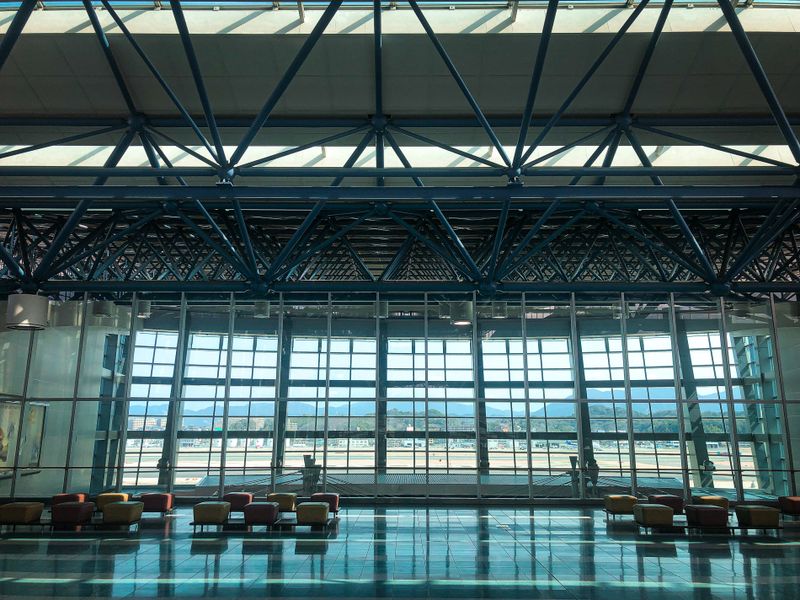Aug 31, 2022
Japan to allow entry of visitors on unaccompanied package tours in further easing of border controls

Japanese Prime Minister Fumio Kishida announced on Wednesday plans to allow the entry of tourists on unaccompanied package tours along with an increase of the entry cap on international arrivals to 50,000 a day from Sept. 7.
The latest announcement regarding the relaxing of Japan’s COVID-19 border measures comes just a week after the prime minister said that the country would no longer require inbound travelers who have been vaccinated three times to show a pre-departure negative COVID-19 test result, again starting on Sept. 7.
“In order to participate in international exchanges taking place between countries, and to take advantage of the weak yen, we will further relax border control measures including by raising the upper limit of entrants to 50,000 and allowing entry for all nationalities through unaccompanied package tours,” Kishida told reporters during a press conference on Wednesday.
Overseas arrivals to Japan are currently limited to 20,000 people a day, a cap which has been in place since June 1.
The prime minister also added that improvements would be made to the My SOS smartphone application in order to facilitate smoother immigration procedures for arrivals at Japan's airports.
When the new measures take effect, one week from now, it will have been around four months to the day that Kishida told reports from behind a podium in London that he would bring his country’s border controls on a par with other G7 nations.
At that time in May, the very country from which the Japanese prime minister made the announcement, England, had few if any COVID-19-related entry requirements. Japan by comparison had an entry cap of 10,000, requirements to test prior to and upon landing, the potential prospect of time in quarantine, and signed pledges that all and more of the above rules would be followed. Plenty to do to get on par.
Just prior to his G7 announcement Kishida had tried to woo financiers in the City of London with talk of bold monetary policy and fiscal flexibility as he urged audiences to “invest in Kishida.”
By contrast, the prime minister appears to have been shy when it came to details about how and along what kind of timeline he would loosen Japan’s border controls, other than to say that measures would be reviewed “in stages.”
The more innocent or excitable of observers waiting to get into Japan might have been encouraged enough by Kishida’s London remarks to invest their hopes in soon being able to visit the country.
Other potential visitors, meanwhile, appeared to remain skeptical or just plain fed up, taking to social media to invest their efforts instead into lambasting Kishida, and in some cases the Japanese people, and even resident foreign nationals for not doing enough to let them in.
“Give us a road map Japan!! For goodness sake my gap year was meant to be stress free, let me get excited about your country instead of increasingly disliking it by the day,” a Twitter user posted on the social media platform in May using the hashtag #japantravelban.
Any skepticism around Japan’s willingness to get on par with G7 border controls, at least any time soon, was not misplaced.
When the country began accepting small group tours in June, media scrambled to create headlines about Japan finally being open for tourism while ever-more disillusioned observers lamented that the tours were something they might have expected from North Korea.
“No thank you,” seems to have been a politer wording of the general sentiment at that time.
With Wednesday’s announcement Japan once again looks set to come up short of the mark, leaving the country’s border controls a frustrating shot or two over the G7 par and with no clear sign as to when it will pick up its game.
Pressed on this matter during Wednesday’s press conference, Kishida remained as non-committal to a timeline now, as he appeared to back in May.
“From now, in regards to enabling smoother entry like that of other G7 nations, we will continue relaxing the border controls while taking into consideration the infection situation at home and abroad, the needs (of travelers), and the border control measures in place in other countries,” he said.
Following the announcement it remains unclear as to what kind of form an unaccompanied package tour for visitors to Japan might take. It is perhaps no great leap of faith, however, to suggest that what the potential leisure traveler to Japan “needs” is for the current requirement to obtain a visa to be scrapped.
The number of foreign visitors to Japan in July this year was 144,500, down 95.2 percent from the same month in 2019 before the outbreak of the novel coronavirus. With virus cases soaring during the seventh wave of the infection, in July Japan became the country with the world's highest number of new coronavirus cases, according to a World Health Organization report.
As of mid-August 12,112 visas have been issued for new overseas arrivals during September 2022 under Japan’s Entry-Release Health Verification System (ERFS), according to government data.
The prime minister said that further announcements regarding comprehensive COVID-19 measures will be made at the appropriate time as he looks toward taking Japan into a “new phase of life ‘with corona’.”
Related
JAPAN TRAVEL TIPS for the after JAPAN TRAVEL BAN visitor



0 Comments